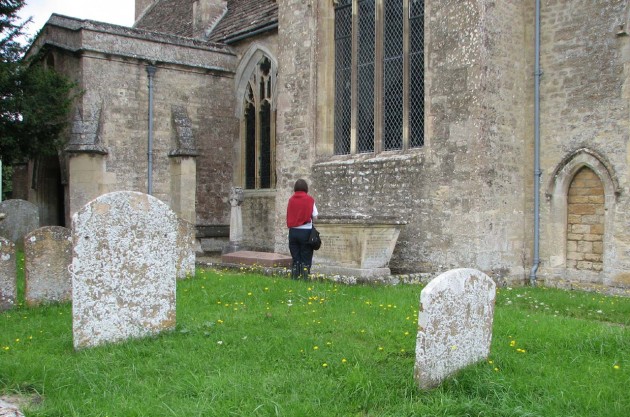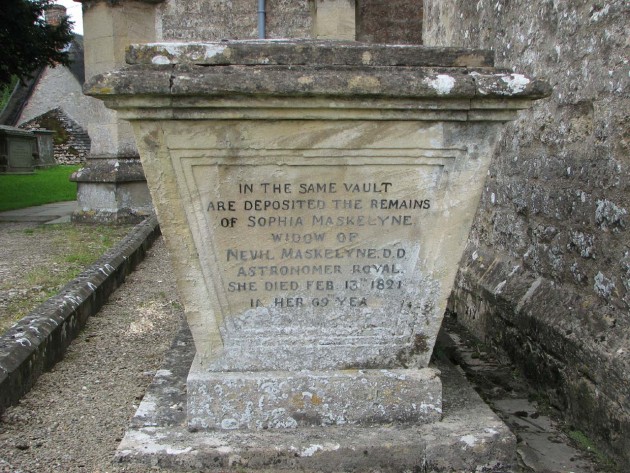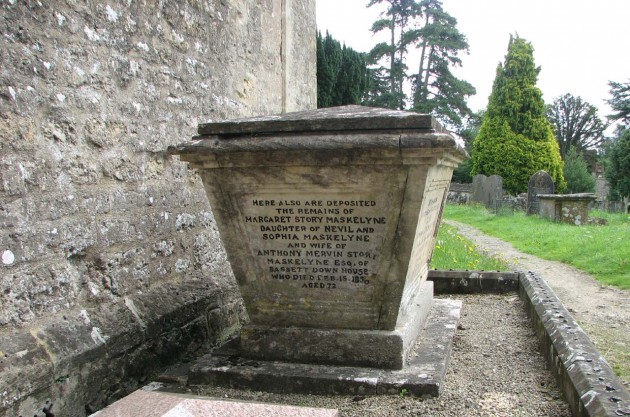…where east meets west
- Home
- Brief History
- The Greenwich Meridian
- Greenwich
(1675–1958) - Herstmonceux
(1948–1990) - Cambridge
(1990–1998) - Outstations (1822–1971)…
- – Chingford (1822–1924)
- – Deal
(1864–1927) - – Abinger
(1923–1957) - – Bristol & Bradford on Avon
(1939–1948) - – Bath
(1939–1949) - – Hartland
(1955–1967) - – Cape of Good Hope
(1959–1971)
- Administration…
- – Funding
- – Governance
- – Inventories
- – Pay
- – Regulations
- – Royal Warrants
- Contemporary Accounts
- People
- Publications
- Science
- Technology
- Telescopes
- Chronometers
- Clocks & Time
- Board of Longitude
- Libraries & Archives
- Visit
- Search
The burial place of Nevil Maskelyne the fifth Astronomer Royal
| Dates in office: | 1765–1811 | |
| Born: | 1732, October 6 (Kensington Gore, London) |
|
| Baptised: | 1732, October 27 (St Martins-in-the-Fields, London) | |
| Died: | 1811, February 9 (Royal Observatory, Greenwich) |
|
| Buried at: | Churchyard of St Mary’s, Purton, Wiltshire, SN5 4EB |
|
| Date interred: | 1811, February 20 | |
| Tomb location: | Chest tomb adjacent to the south side of the south transept |
|
| Memorial plaques etc: | East wall of Chapel of St Nicolas in the south transept |
|
| Church website: | http://www.stmaryspurton.org.uk | |
Although Nevil Maskelyne was born and brought up in London, his father Edmund was born in Purton and baptised in the church there. In Tudor times, the Maskelyne family were significant landowners in Purton. Their descendents still live in the area today.
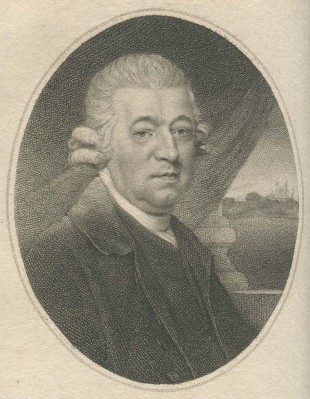
Nevil Maskelyne. Engraved from a pastel drawing by John Russell and published by J. Asperne, 1 March 1804
As well as pursuing a career in Astronomy, Maskelyne increased his income by entering the church. He became a Batchelor of Divinity (BD) in 1758 and a Doctor of Divinity (DD) in 1777. He was ordained Deacon in 1755 and Priest in 1756. In 1755 he became curate of Chipping Barnet and in 1775, received the living of Shrawardine, Shropshire, which was in the gift of his nephew, the second Lord Clive. In 1782, his College offered him the living of North Runcton, Norfolk, which he accepted. Although in the eighteenth century, the practice of holding more than one ecclesiastical office at a time was commonplace, many clergymen were not eligible to hold livings in plurality and certain combinations of offices were forbidden by ecclesiastical law. Because of this, Maskelyne had to resign his position at Sharwardine.
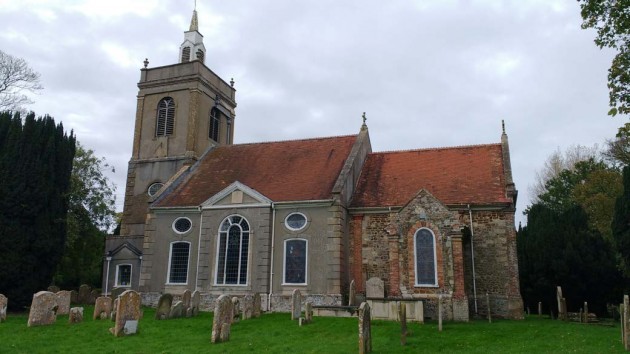
North Runcton Church. Although Maskelyne was the rector here from 1782 until his death in 1811, he was not buried here. Photo: October 2017
In 1784, Maskelyne married Sophia Rose at the parish church of St Andrew Holborn. His only child Margaret was born at Greenwich on 25 June 1785.
When his brother William died in 1772, Maskelyne inherited Pond’s Farm at Purton Stoke, which he used as a Country retreat. In later years, he inherited other properties. He also inherited various charitable responsibilities in the neighbourhood.
Following his death at the Observatory on 9 February 1811, Maskelyne was taken to Purton where he was buried in the churchyard. His wife (1752-1821) and daughter (1785-1858) are buried with him. Other members of the extended family are also buried at Purton.
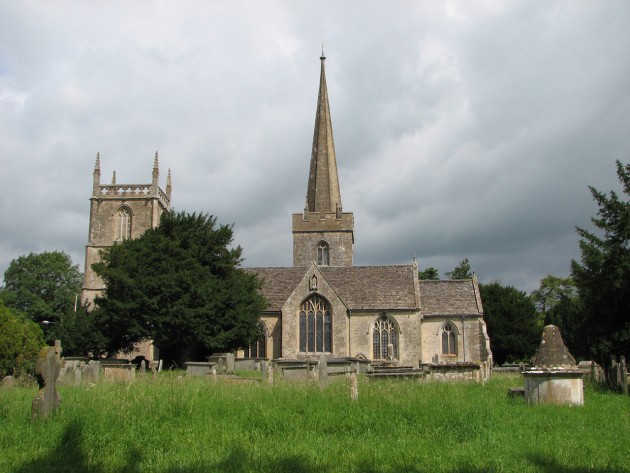
Purton Church from the south. Maskelyne's tomb is in front of the window in the centre. This photograph and those that follow were all taken on 28 July 2007
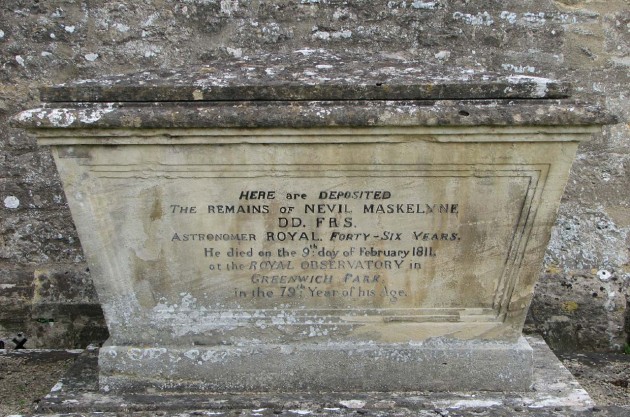
The inscription is on the south side of the tomb. His wife and daughter were subsequently buried in the same tomb
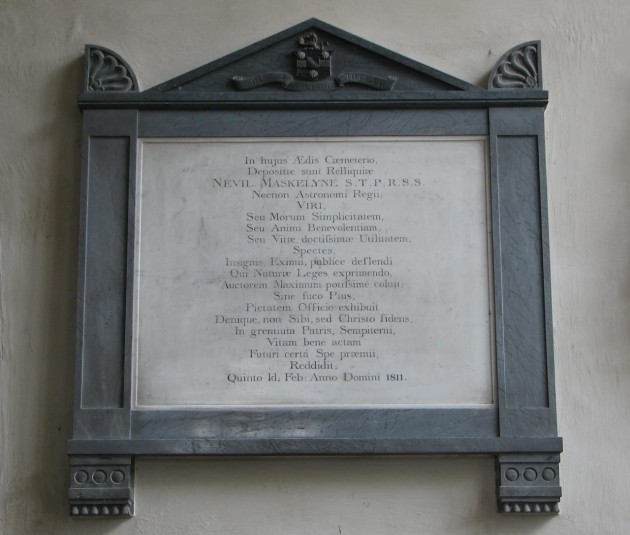
The tablet inside the church. The translation that follows is by Lesley Murdin and is taken from Howse’s book Nevil Maskelyne (CUP, 1989): In the cemetery of this church Are deposited the remains of NEVIL MASKELYNE DD. FRS. Astronomer Royal, And whether you look at The simplicity of his way of life Or the kindness of his heart Or the usefulness of his learning, This man worthy Of being publicly mourned Since he worshipped the Great Creator By formulating laws of Nature: Virtuous without presence, He demonstrated goodness in his work, Ultimately trusting not in himself, But in Christ, to the Bosom of the Eternal Father He rendered a life well lived In the certain Hope of the reward to come. This on the fifth of February AD 1811.
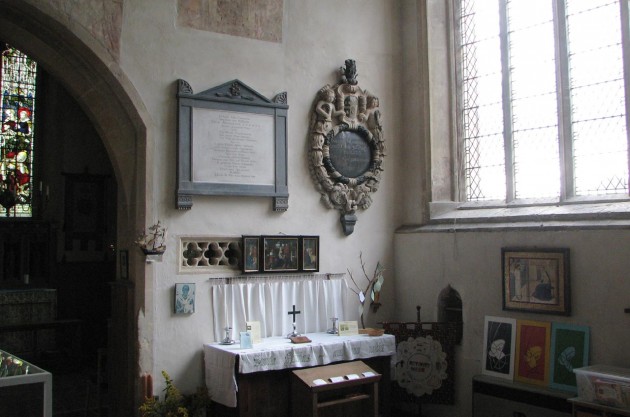
The chapel of of St Nicolas in the south transept where the tablet is located. The tablet to its right was erected in memory of Maskylene's grandfather who died in 1679
Further Reading
Nevil Maskelyne, the Seaman’s Astronomer. Derek Howse. Cambridge University Press, 1989.
The Purton & Purton Stoke connections of Rev Nevil Maskelyne (1732–1811)
© 2014 – 2026 Graham Dolan
Except where indicated, all text and images are the copyright of Graham Dolan
